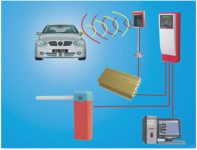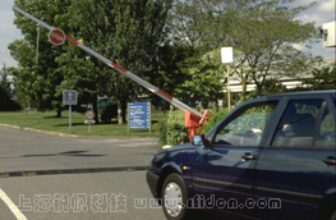
Huiyi Huapu Parking Lot Long-distance Card Reader Solution
[ad_1]

At present, the parking lot management system widely uses short-distance card readers. Its biggest advantage is low price, but it is very inconvenient. With the introduction of the parking lot intelligent management system, long-distance card readers have become the parking lot. “New favorite”.
Huapu launched a combination of RF60 transmitter chip and RF31 receiver chip. This combination solution was launched to help customers reduce costs and shorten design cycle requirements during the development process. During use, only hardware is required for circuit board wiring, and the technology provided by the company Support to solve other peripheral problems, lower the customer’s design threshold, eliminate development investment, and accelerate the progress of customer projects.
At present, the long-distance card reader system on the market includes a card-type transmitter and a receiver inside the card reader host to complete the communication. The communication method mainly uses the 433.92MHz frequency band ASK modulation, and the communication distance is about 10-20 meters (according to The frequency bands and formats used are different for different schemes).
The biggest challenge in the design of most long-distance card reader systems is to achieve low power consumption and high sensitivity in the card transmitter and receiver, while being able to achieve long-distance communication and reliability. The RF60 transmitter chip and RFM31B receiver module launched by Maple can meet the requirements of system designers. Among them, the RF60 multi-band RF transmitter chip is aimed at garage doors, electric gates, car central locks, car anti-theft alarms, and RKE (remote control access control systems). ), an SoC chip designed in the fields of industrial control and wireless smart home, RF60 is an integrated MCU and RF function, can choose ASK (OOK) or FSK transmission mode, used for 315/434/868/915 MHz broadband Application, and at the same time cooperate with Maple’s RFM31B FSK receiving module with low cost, low power consumption, high sensitivity, good stability, and convenient debugging to form a complete RF transceiver system; it perfectly solves the problem of low power consumption in the design of long-distance card reading system Realize the requirements of low-cost and high-performance systems with stability and reliability.
RF60 supports different communication rates: 0.1Kbps~25Kbps. It has stable RF performance in the working voltage range of 1.8V to 3.6V. When the output power is +10dBm, the current is only 14.2mA, and the sleep mode current is only 10nA. The power consumption is very high. Low, so the battery on this device can be used for a longer time.
RF60 uses the AES (128-bit) encryption algorithm, which is the American Advanced Encryption Standard (Advanced Encryption Standard) and a free and open source standard, which can be used by any enterprise unit. The 128-bit key number means the greater the amount of encryption operations. At the same time, encrypted data is harder to crack. While pursuing safety performance, RF60 is very small in size, requires few external components, and can have no external crystal oscillator, which is convenient for production and debugging, which makes them more cost-effective.

RFM31B is a low-cost FSK radio frequency receiving module. The receiving module has a receiving sensitivity of up to -121dBm, an ultra-low-power shutdown mode, a working receiving power consumption of 18.5mA, an adjustable receiving bandwidth: 2.6-620KHz, and an automatic wake-up function ; These features make RF31B an ideal choice for the receiving end in some ultra-low power consumption applications such as remote access control systems and remote controls.

[ad_2]



